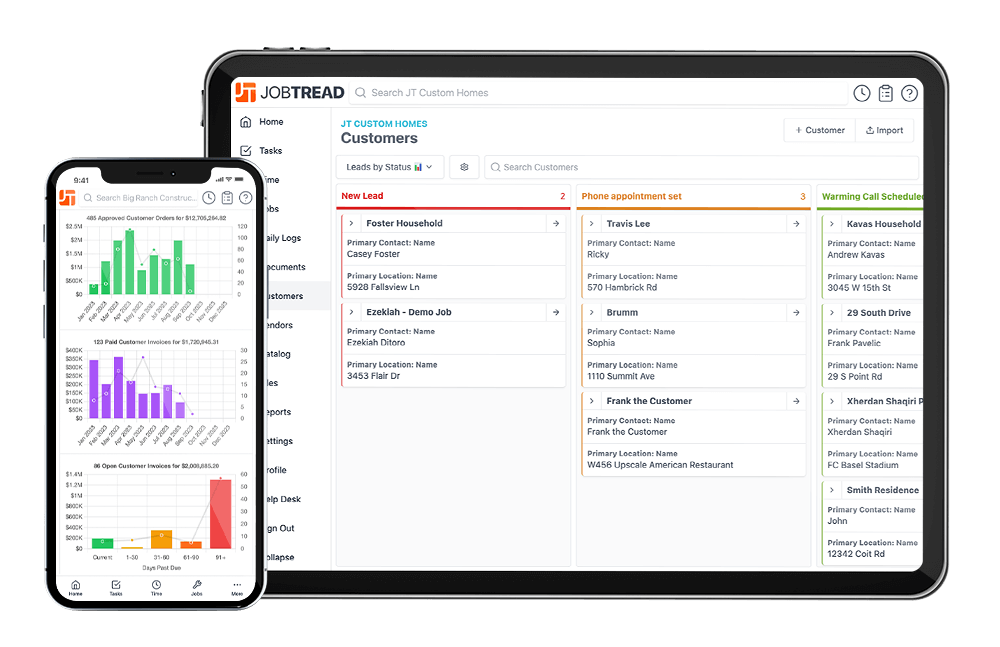Top 3 Job Costing Tips to Maximize Construction Profits

Accurate job costing can make or break a construction business. It’s more than just tracking numbers; it’s about building profitability by understanding, organizing, and controlling every cost. For contractors, mastering job costing means consistently profitable projects and smarter, more competitive bids. Learn how precise cost tracking can lead to efficiency and growth.
Master Job Costing for Construction Success: Accuracy, Profit, and Efficiency
Why Job Costing Matters in Construction
Job costing is the foundation of financial control in construction. By tracking the actual costs of materials, labor, and overhead on a per-project basis, contractors can see the true profitability of each job. This insight enables you to make data-driven decisions, improve bidding accuracy, and ultimately grow your business. However, the key to effective job costing lies in accurate expense tracking, ensuring profitability, and organizing costs with purpose.

Have a question about JobTread?
Schedule a quick phone call with one of our experts to see how JobTread will work for you.
Schedule a CallTrack Every Expense Accurately
A successful job costing strategy requires attention to detail. Every expense, no matter how minor, should be recorded. Here’s how you can stay on top of your expenses:
- Invest in Cost Tracking Tools: Digital tools streamline tracking by letting you update costs in real time. This minimizes forgotten entries and keeps data accessible for review.
- Separate Direct and Indirect Costs: Direct costs (like labor and materials) should be linked directly to the project, while indirect costs (e.g., office utilities) should be allocated accurately across jobs.
- Utilize Labor Tracking Features: Many projects struggle with accurate labor cost tracking. Consider time-tracking software that logs hours in real time, giving you insights into daily labor costs.
- Implement Routine Checks: Schedule weekly or bi-weekly expense reviews to catch discrepancies early and stay within budget.
By consistently tracking every expense, contractors can see where money is going and identify cost patterns that may impact future jobs.
Focus on Ensuring Profitability
For long-term growth, job costing should do more than track expenses—it should improve profit margins. Contractors can protect profitability by setting up a system for comparing projected versus actual costs. Here are key steps to boost your project profitability:
- Define Profit Margins Per Cost Type: Break down target profit margins by cost type, such as labor, materials, and overhead. Adjust these targets based on project size or complexity.
- Analyze Historical Data: Use past project data to gauge average costs and profits. This makes future estimates more accurate and prevents common underpricing mistakes.
- Set Up Alerts for Cost Overruns: Many job costing software options allow users to set budget alerts for unusual expenses, ensuring no surprise costs go unnoticed.
- Track and Improve Labor Efficiency: Labor costs can easily spiral, especially if inefficiencies aren’t monitored. Ensure crew leaders track work hours accurately, and look for areas where productivity can improve.
Profitability hinges on proactively comparing your estimates with actuals and adjusting processes as needed.
Organize Costs Effectively for Better Insights
Organizing costs efficiently is a game-changer in job costing. With organized data, contractors can quickly review job progress, compare costs, and make real-time decisions. Here’s how to stay organized:
- Use Phased Cost Tracking: Break down your job into phases like pre-construction, rough-in, and finishing. Tracking by phase shows exactly where costs are concentrated and if adjustments are needed.
- Create Cost Categories: Organize expenses into categories such as labor, materials, equipment, and subcontractor fees. This approach allows for clearer insights and more accurate reporting.
- Standardize Your Data: Inconsistent data can lead to miscalculations. Set guidelines for how expenses are recorded, making sure that descriptions, quantities, and rates are uniformly entered.
- Utilize Selection Grouping for Client Choices: If you offer clients options (e.g., standard vs. upgraded materials), job costing software can create groups that track these selections and show cost deltas.
A well-organized system lets you pinpoint where your project stands financially and manage your budget actively, rather than reactively.
Conclusion
Mastering job costing is a journey of continuous improvement, precision, and organization. By accurately tracking every expense, focusing on profitability, and organizing costs effectively, contractors can maximize project success and make data-driven decisions that enhance the company’s future. Start building a stronger business foundation by implementing these strategies and watch your profitability soar.
Ready to simplify your job costing process and boost profitability? Schedule a demo with JobTread to see how it can transform your cost management and drive success on every job.
Ready to take your business to the next level?
Explore it for yourself or let one of our knowledgeable staff members show you how.